#animal attacks
Text
TIL that although we are warned to be most afraid of a mother bear and her cubs, nearly 90% of fatal bear attacks are at the paws of lone male bears. (x)

134 notes
·
View notes
Photo

Countries with the highest terrestrial animal attacks.
69 notes
·
View notes
Text

Yowie Country (2014)
#/x/ 4chan#greentext#innaoutback#camping story#creature story#cryptids#weird noises#being watched#near miss#animal attacks#dangerous situation#scary#nope
5 notes
·
View notes
Photo

The mousepads are back in stock and I will be bringing as many with me to Desucon Frostbite as I can carry (spoilers, not many). Come grab yours before they disappear again!
I’ll probably sell a few online after the con so international people stay tuned!
26 notes
·
View notes
Note
More bears for you:) Have a good day!

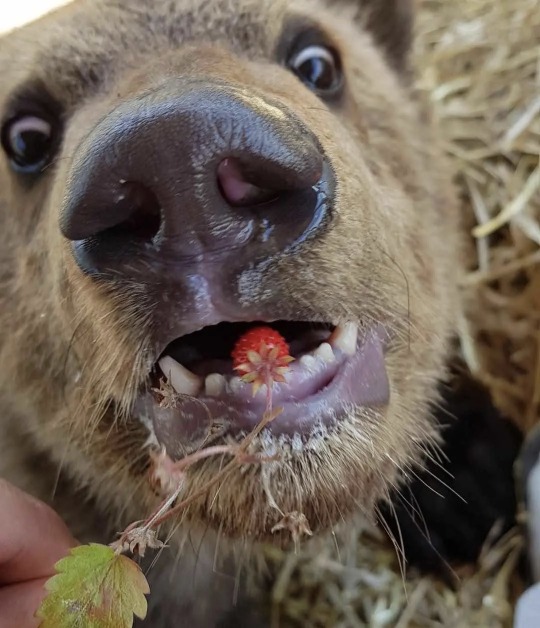
I accept your bears and raise you baby raccoons

5 notes
·
View notes
Text

"A short leash makes all the difference"
A small summer project where i needed to create a poster based off of the rising numbers of dog attacks happening in the UK, scary shit eh? Pretty sure it should be a thing where you need a license to own a pet because there are way too many people out there who have no clue on how to properly train an animal (and im one of them).
But seriously, always keep your dogs on a leash in public places. Its not that difficult.
For anyone curious what the poster was inspired by:
#animal control#graphic designer#graphic design#graphic art#graphicwork#poster design#summer project#animal welfare#animal attacks#raising awareness#short leash#warning posters#2d art#digital art#illustration#adobephotoshop#red and black
3 notes
·
View notes
Text
youtube
HORROR NA ÁFRICA: O FILME DE TERROR RODADO NO QUÊNIA SUPOSTAMENTE BASEADO EM FATOS REAIS!
#Raju Patel#horror movies#african horror#In the Shadow of Kilimanjaro#kilimanjaro#Irene Miracle#John Rhys-Davies#Timothy Bottoms#Michele Carey#Calvin Jung#kenya#baboons#monkeys#trash movies#wild baboons#animal attacks#Youtube
2 notes
·
View notes
Link
I would have said Alaska tbh. But yeah watch out for snakes/spiders/scorpions and others venomous critters this summer

23 notes
·
View notes
Text
This is completely random but I was remembering the whole Harambe bullshit that happened and how this guy tried to argue against me by citing a video THAT WASNT EVEN OF HARAMBE.
It was a 2009 video of a gorilla lifting a kid’s shirt. That’s wasn’t H. Like if you’re going to argue against me at least give me the proper stuff bro.
Also the stupid “Harambe is life” meme that this one cunt kept spouting when you tried to talk to her about it.
6 notes
·
View notes
Text
What to do if you encounter dangerous wildlife on land

Let's just assume for a moment that you're not an animal whisperer so I can provide you with some rad tips on how to (maybe) not die should you encounter dangerous wildlife on your next adventure.
The general rule of thumb is to try to avoid attracting wildlife to begin with by basically lessening your presence as much as possible and keeping food in sealed containers. This includes not having headphones on or earbuds in so you can listen to your surroundings. Still, taking all precautions necessary doesn't mean you'll never encounter predators higher up than you on the food chain.
Here's whatcha do if you're attacked by bears, bison / buffalo, cougars, coyotes / wolves, deer / elk, and/or snakes.
Bears


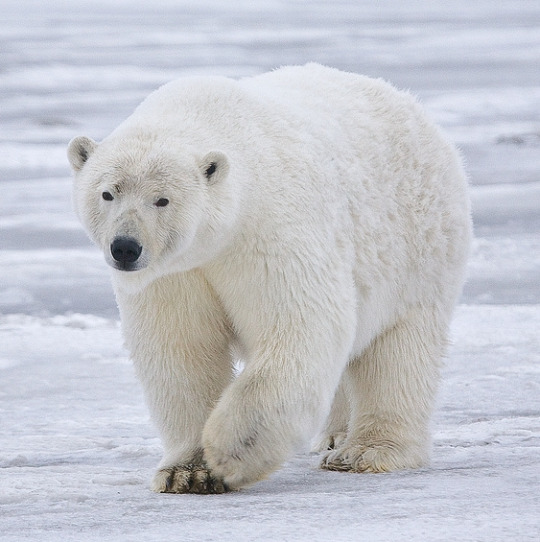
Bears are cute from a safe distance, but do not think for a moment that they wouldn't rip your face off. Outdoor Life says, "All bears are dangerous, but regardless of species you are at greatest risk if you surprise the bear or get between a mother and cubs." Hungry bears are also dangerous because they may see you as competition for food... or as the food. Remember that black and grizzly bears will often bluff charge, so it's important to remember this and not break into a run! Polar bears, however, will rarely bluff charge.
Black bears
Of all the other bear subspecies, the black bear is reputedly the least aggressive, but will still wander into camps, occupied or not, if they get whiffs of food. If this should happen:
DON'T RUN, because this will trigger an attack.
Keep your movements slow and deliberate.
Don't approach the animal. You're not Steve Irwin.
Pick up small children so they're not perceived as prey.
Make loud noises, such as banging pots and pans and/or yelling.
Make yourself appear larger by waving your arms overhead.
Leave plenty of space for the bear to escape so it has a clear escape route and doesn't feel cornered, which will trigger an attack.
Move upwind of the bear so your scent will identify you as human and not the normal type of entrée.
Grizzly bears
These guys don't enjoy surprises, and so actually the louder you are during your hikes through grizzly bear territory, the better your chances of not encountering one at all. In addition, try to hike in as large a group as possible, avoid taking dogs (which are irritants to bears), and keep away from animal carcasses (which may belong to the bear). Still, if you do find yourself within close proximity of a grizzly (verbatim from Outdoor Life):
Stop, remain calm, back away slowly while speaking in a calm voice. You are trying to show the bear that you are being submissive and yielding to his territorial supremacy.
Do not turn your back on the bear or run; that will stimulate an attack.
Avoid direct eye contact, because that is considered an act of aggression.
A grizzly might bluff-charge…or not. If it lowers its head and pins ears back, it’s coming.
Submit. Lie face down on the ground, cover your head with your arms and hands and play as dead as possible. You might be bit or clawed, and then the bear might leave… or not.
If the bear continues to maul you, in spite of your playing dead (an indication that it wants you for food), you might have to fight for your life using any available weapon (knife, stick, rock, fingernails), focusing your counterattack on the bear’s eyes and nose with as much violence as you can muster.
Polar bears
Polar bears are officially the largest land carnivores in the world. And because of the harsh, unforgiving environments in which they live, they are opportunistic hunters and will stalk lone prey if and when given a chance. You'll know the polar bear is agitated if they snap their jaws, make loud huffing noises, stomp their feet, and stare directly at you with their heads lowered and ears pinned against their heads. If the polar bear charges, assume it's not a bluff and be prepared to fight. Once again, running at this point will only ensure your demise.
Parks Canada instructs the following:
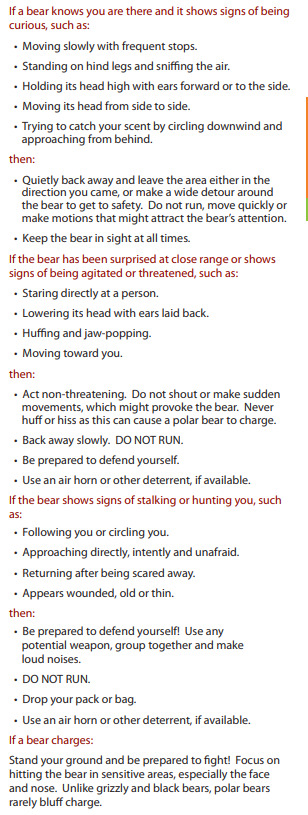
■□■□■□■━■━■□■□■□■
Bison & buffalo
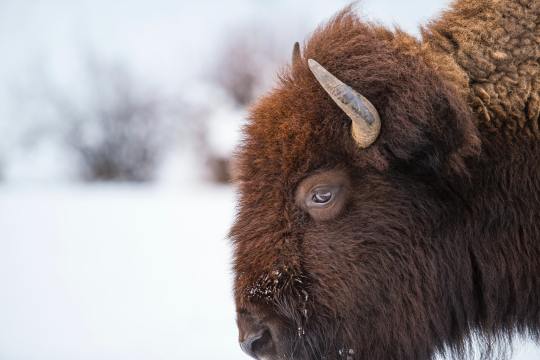
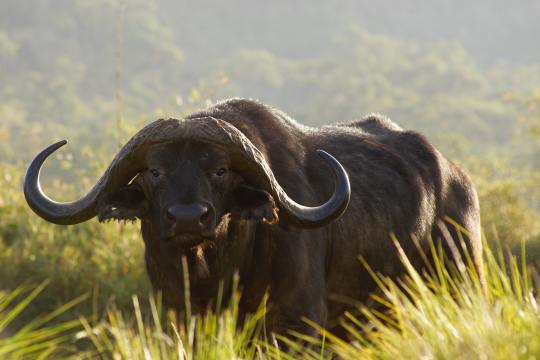
In Yosemite, bison have injured more people than grizzly bears, and while they may look lumbering and slow, they're not. Their size and their antlers are formidable weapons with which they gut and gore those unfortunately without the knowledge of what to do should they encounter a bison in the wild. Visitors and tourists are advised to remain at least 100 yards from bison and, generally, if a bison charges and knocks someone down, they'll go about their way. But in some cases, the bison has stood over the person and attacked them as they've tried to stand up.
Here's what you should do if you encounter a charging bison (verbatim from Outdoor Life):
Run for cover if it's close.
Take cover behind something large and keep moving as the bison tries to get at you.
Climb a tree, if possible.
Keep your distance.
■□■□■□■━■━■□■□■□■
Cougars (aka panthers / pumas / mountain lions)


Avoidance is most preferable, but again, not always possible. According to California's Division of Fish & Wildlife says cougars are most active at "dawn, dusk, [and] night." You should also avoid hiking and/or jogging alone, and "stay alert on trails." Keep children close and do not allow them to roam freely; keep pets on leashes.
Once more, it's important NOT TO RUN! You will instinctively have the urge if you encounter a big cat, but you need to fight it because, as with most other predatory wildlife, this will trigger a chase response in the animal and you will not outrun these felines. An employee of the Utah Division of Wildlife Resources says: "If you see a mountain lion or mountain lion kittens, stop and just back away from the area. If you find a dead deer, especially if it’s been covered up with dirt and sticks and such, stop and back away [...] Because mountain lions will take a deer and kind of throw some vegetation and dirt and rocks on top of it, and they don’t go that far away a lot of times, so that’s when you want to stay away.”
Make yourself appear bigger & make warning shots. It's important that you face the cougar and do your best to look intimidating, which means making eye contact because cougars will consider this threatening. To make yourself appear bigger, wave your arms overhead; if you're wearing a jacket or vest, open it. DO NOT EVER turn your back on or kneel down in front of the cougar.
"Talk to the cat, calmly and firmly, while creating more and more distance from the cat." Make loud noises, but avoid "high pitch tones or high pitch screams." [X]
Fire off a few warning throws with rocks (or whatever you have you can throw) nearby the cougar to show it you can defend yourself. You don't want to hit and unnecessarily injure the animal at this point.
Cougars aren't generally aggressive but will attack for the same reasons as other wild animals: "lack of food, loss of territory, or seeing humans as prey." So if the above doesn't get you safely away, then prepare for physical conflict. Prey of these felines "are often found with puncture wounds to the back of the head or neck, and also to the throat, so these are the areas of your body you need to shield the most. According to Utah's Division of Wildlife Resources, "If the cougar thinks it's not likely to win its fight with you quickly, it will probably give up and leave."
Until that happens, fight for your life by:
Using anything at your disposal, such as "rocks, sticks, caps, jackets, garden tools and even [your] bare hands."
Avoiding falling and try to remain standing at all times. "If you do fall down, don't stop protecting your head and neck while you get back to your feet."
Throwing objects at the cat with the intent to injure or maim. However, the National Parks Service advises not to throw everything you have. "You might want to hold on to one metallic or hard plastic water bottle in reserve to use as a club or as weight in your backpack or fanny pack, which can be swung at the cat if it gets close enough.”
If you have a backpack you can swing it around in front of you to use as a shield; and if you hike with poles, you can use these as weapons.
■□■□■□■━■━■□■□■□■
Coyotes & wolves
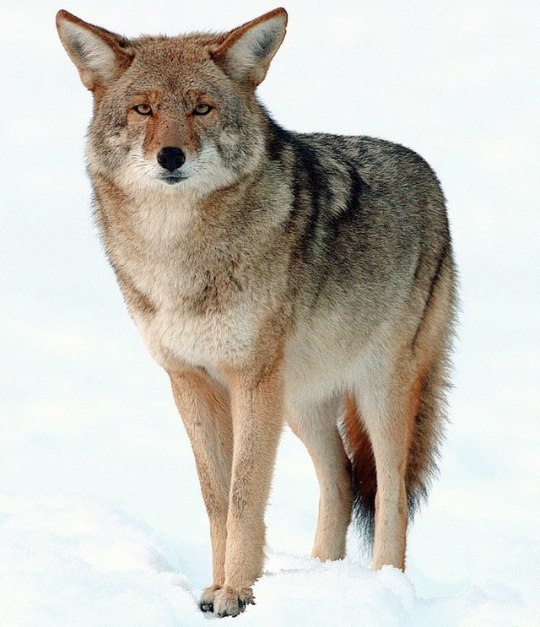

These animals hunt in packs, so if you encounter one, chances are there are more nearby. "[They're] cunning and will stalk their prey, sneaking in from behind to nip and rip at leg muscles to disable their victim. Once you're down, the pack will swarm you."
DON'T RUN!
Face it and maintain eye contact. "Coyotes can be intimidated, and most times simply standing your ground will be enough to send [it] on its way." Maintain eye contact with wolves too to establish your dominance -- don't let them think you're weak.
Make yourself look large (using the same tactics from previously listed animals) and yell or make loud noises.
If you're alone and surrounded, start shooting to kill and don't fall or you'll be overcome.
If you're surrounded and in a group, "position yourselves back to back, facing the animals. Use clubs, knives, sharpened sticks (spears), rocks, or anything else you can grab to fend off the attack."
Protect your throat and arteries.
■□■□■□■━■━■□■□■□■
Deer & elk
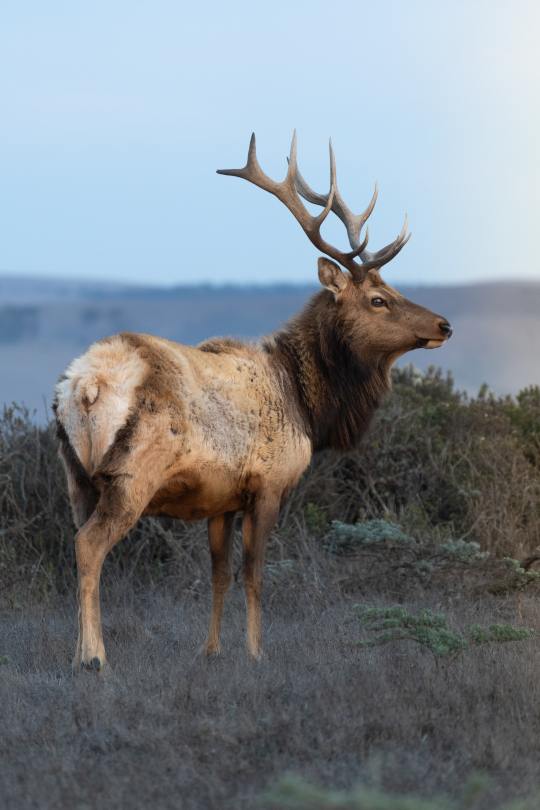

Deer and elk aren't predatory, but they can still be dangerous if they feel threatened or are protecting young. If you're charged by one of these creatures, here's what to do (verbatim from Outdoor Life):
Do not turn your back on the animal, as they almost always charge from behind.
Facing the animal, raise your arms and your jacket to make yourself appear larger. Swing the jacket around to make yourself appear formidable.
If you have a dog with you, turn it loose. This may distract the deer/elk.
If you're able to, climb a tree.
If you're knocked down, curl up into a fetal position and protect your head, neck and organs. You might be thumped a few times, and then it is likely the animal will leave.
If the animal has antlers, you might sustain serious injuries, so do your best to put trees or boulders between you and the animal.
■□■□■□■━■━■□■□■□■
Snakes


Unlike some of the other predators on this list, snakes are not actively looking to attack humans and will only do so if they're cornered, hurt or handled. They're also not in the habit of chasing after you, despite depictions in media.
Venomous snakes are the most dangerous, but even bites from non-venomous snakes can become dangerous if you have an allergy or if they get infected. Here's how you can tell the difference between the two:
Venomous snakes
Produce venoms.
Have fangs with which to deliver the venom to their prey.
Most venomous snakes have a triangle-shaped head.
Have elliptical pupils.
Bites from a venomous snake leave one or two puncture marks on the skins of their prey.
Normally have distinguishable heat-sensitive pits on the head.
Have rattling tails.
Have one row of anal scales.
Non-venomous snakes
Do not produce venoms.
Do not have fangs, but have maxillary teeth in their upper jaws.
Have rounded heads.
Have round pupils.
Bites leave many punctures on the skin.
Do not have distinguishable heat-sensitive pits on the head.
Do not have rattles.
Have two rows of anal scales.
May mimic a venomous snake as a defensive mechanism, which is why it's important to know the differences between them.
Unless you're a pro at spotting these differences, the safest thing to do is just assume every snakebite is venomous. This is the safest route because there are four types of snake venoms, and they are as follows (verbatim from Stone Age Man):
Cardiotoxins: affect the heart; they may cause the heart to beat irregularly or stop, causing death. Cobra venom contains cardiotoxins.
Hemotoxins: destroy red blood cells, cause organ degeneration and general tissue damage. Vipers and pit vipers contain hemotoxins.
Myotoxins / cytotoxins: cause severe tissue damage. If not treated right away, can cause loss of limbs.
Neurotoxins: destructive to nerve tissue and in general are very dangerous because they can shut down your ability to control muscles, like your heart and diaphragm which keeps you breathing!
Avoid encountering snakes to begin with by:
not sticking your hands into holes unless you definitely know what's inside;
avoid walking with bare feet through thick brush without being able to see where you're stepping;
avoiding provoking snakes by trying to handle or kill them;
not handling dead snakes, which can still bite you. This happens even with snakes that have been decapitated if their nerves are stimulated. Venomous snakes are even more likely to retain this reflex after death, so be wary.
If you're bitten, treat it immediately by following the instructions below:
Get safely away from the snake to avoid being bitten again.
Wash the bite with soap and water.
Immobilize the bitten area and keep it lower than the heart. This will slow the venom.
Stay calm and still. Running or any kind of exertion will allow the toxins to travel quickly through your system.
Immediately wrap a bandage tightly 2 to 4 inches above the bite to help slow the venom. The bandage should not be so tight it cuts off a vein or artery, and you should still be able to slip a finger between it and your skin.
Seek medical attention immediately, either by calling 911 or a friend / family member. Do not attempt to drive yourself because you could possibly lose consciousness.
Use a suction device on the bite to draw venom out without making any incisions. You should not make any incisions on or around the wound as they can become infected, and you should not try to suck the venom out, as this will only spread the venom to your mouth.
Mark the bite and the time it happened, and continue marking the redness as it expands along with the time. This will help response teams determine the severity of the bite even if you lose consciousness.
Do not place ice or any cooling elements on the bite, as this will make removing the venom via suction less effective. [ X X ]
#facts#h&fa#outdrs#sd#survival#survivalism#shtf#animals#animal attacks#bears#snakes#cougars#bison#buffalo#deer#elk#wild animals#outdoors#hiking#camping#first aid#what to do
3 notes
·
View notes
Photo
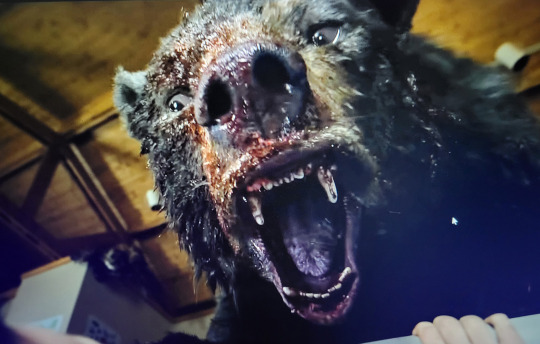
Cocaine Bear. Can't wait for this one. Hope it's just 90 minutes, or even two hours, of the bear rampaging through Tennessee and Georgia, fucking up anything that crosses it's path.
4 notes
·
View notes
Note
It’s so good that you’re taking a break from twitter! People call tumblr a hellsite but twitter is The Hell
yeah, someone replied to me about how my gamzee tweets remind them of when a dog attacked them when they were young and i knew it was time to Log Off for a while.
#asks#animal attacks#idk just in case anyone has that blacklisted#another guy keeps replying trying to like set me straight on my gamzee opinions or something#and when i checked today just to see i think they were replying to people in my replies after i had blocked them so#yknow normal twitter things
14 notes
·
View notes
Text












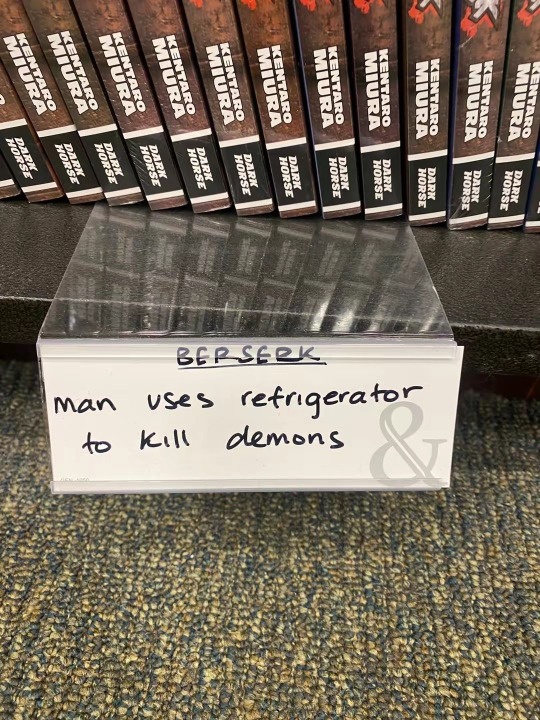



#...a work of art actually#anime#books#the promised neverland#fullmetal alchemist#sakamoto days#one piece#one punch man#nana#haikyuu#kakegurui#hunter x hunter#fire force#demon slayer#chainsaw man#akira#attack on titan#berserk#manga
35K notes
·
View notes
Text
Victims of animal attacks may suffer serious injuries, including nerve and tissue damage, permanent disfigurement, and psychological distress. Even minor injuries from an animal attack may require extensive medical treatment for complete recovery. Timely medical care significantly reduces the chances of injuries taking a turn for the worse.
0 notes
Text
Dog bite victim suffers eye paralysis after catching rare disease
New Post has been published on https://petn.ws/DKqw5
Dog bite victim suffers eye paralysis after catching rare disease
Health By Alexandra Klausner Published March 15, 2024, 3:12 pm ET A Japanese man contracted a rare ocular disorder after being bitten by a dog — and his eye might have been permanently paralyzed had he not received proper treatment. The 19-year-old, who has not been publicly named, was bitten on the left side of […]
See full article at https://petn.ws/DKqw5
#DogNews #AnimalAttacks, #Article, #Doctors, #Dogs, #Eyes, #Health
0 notes

